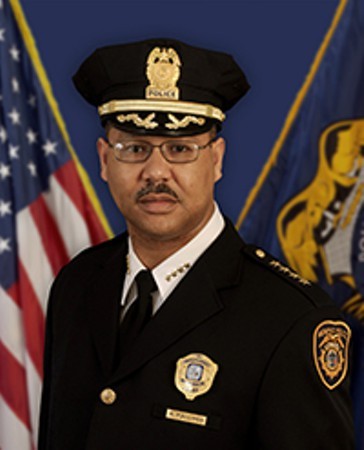Strickland: Police Camera Project Making Progress
Numerous agencies across Memphis and Shelby County are working toward the full deployment of body cameras and in-car cameras for the Memphis Police Department (MPD) even as leaders announced last month that the project was suspended “indefinitely.”
That was the message Memphis Mayor Jim Strickland brought to Memphis City Council members Tuesday, detailing next-step plans that include the need for 10 new video analysts and possibly $4.1 million over the next five years to store the video files.

Strickland
Council members told Strickland that they’ve heard concern in their districts about last month’s announcement that the body project was suspended.
“Suspending it indefinitely, in the African American community, it rubbed them the wrong way,” said council member Berlin Boyd.
Strickland countered that it wasn’t the response of the “entire African American community” but let Boyd know that the project “is important to me.”
“The previous administration did not get them on the streets and did not plan for the public records response and did not work with the Shelby County District Attorney General’s (SCDAG) office,” Strickland said. “We are going to do this and we’re going to be very transparent about the entire process. I wish I could say when they’ll be on the street…but we just can’t do that right now.”
Council member Edmund Ford Jr. told Strickland that he can’t “keep blaming the previous administration” and said people want to know “when is the current administration going to take accountability on the issues.”
Ford laid out that fact that there have been 22 homicides in the first 33 days of 2016, pointing to the urgency of the situation and the need for police cameras. He offered his help on the council.
“Let’s make it happen,” Ford said. “Let’s get it done.”
Strickland told him that he takes full responsibility for the project and that he would get it done.
Where are we now?
Three MPD officers are now field testing body cameras. In-car cameras (looking out the windshield and into the back seats) are now deployed in 150 MPD cruisers.
Since the in-car cameras were switched on in October, the city has collected 22,000 videos. They average 30 minutes each for a grand total of about 11,000 hours of videos, according to MPD interim director Michael Rallings.
MPD has 11 forensic video analysts to review the video and to redact it for various reasons, a process that take three hours for every one hour of video. That process is necessary to fulfill public records requests, Strickland said, noting that one citizens asked for all video of police incidents that led to an arrest.
Redactions, he said, would be done to protect victims of crimes and children and would cover nudity.
Over on the county side, the SCDAG may need up to 30 new staffer to review video evidence for use in criminal cases. The county will also need new computer software to manage the footage. Strickland it can now take 45 minutes to review a five-minute video.
What’s next?
Strickland wants to expand the body camera pilot project to one full shift at the Crump Station, which is about 14 officers. The city now has 1,700 body cameras and full deployment of the project would use them all.
Also, Strickland wants to add 750 in-car cameras over the next four years for a total of 900 car cameras.
Strickland said he will return to the council’s Public Safety Committee in two weeks with more details on the overall project. Also, he said he’ll keep the council informed on its progress with regular updates during the Public Safety Committee, much like MPD does now with its sexual assault kit project.
The cameras
Council member Patrice Robinson asked if officers could turn the cameras on and off themselves.
“It they can turn them off themselves, what’s the point of even having them?” Robinson asked.

Rallings
MPD director Rallings said, yes, officers can manually turn the cameras on and off but after a lengthy discussion of when the cameras are automatically turned on and why it’s not a good idea to run the cameras at all times.
Car cameras are atomically switched on when the the car’s lights are turned or when the car reaches 75 miles per hour, “because if you’re driving that fast without [your alert lights] on, we want to know why,” Rallings said.
Some body cameras are tied to the car cameras and switch on at the same time. But most will be mostly switched on manually by officers.
That move is, in large part, motivated by the amount of data created by running a camera nonstop and the cost to sore that data, which could “bankrupt the city,” Rallings said.
He said he knows that idea doesn’t sit well with some but noted that he is an African American police officer who doesn’t “hide behind my ethnicity” and said no one wants these cameras more than he does.
However, Rallings likened the project to “sending the first astronauts to the moon” and reminded council members that Rome wasn’t built in a day. He said he’s aware that the delay make some “citizens think there’s some kind of conspiracy against them” but that “we just want to get it right.”